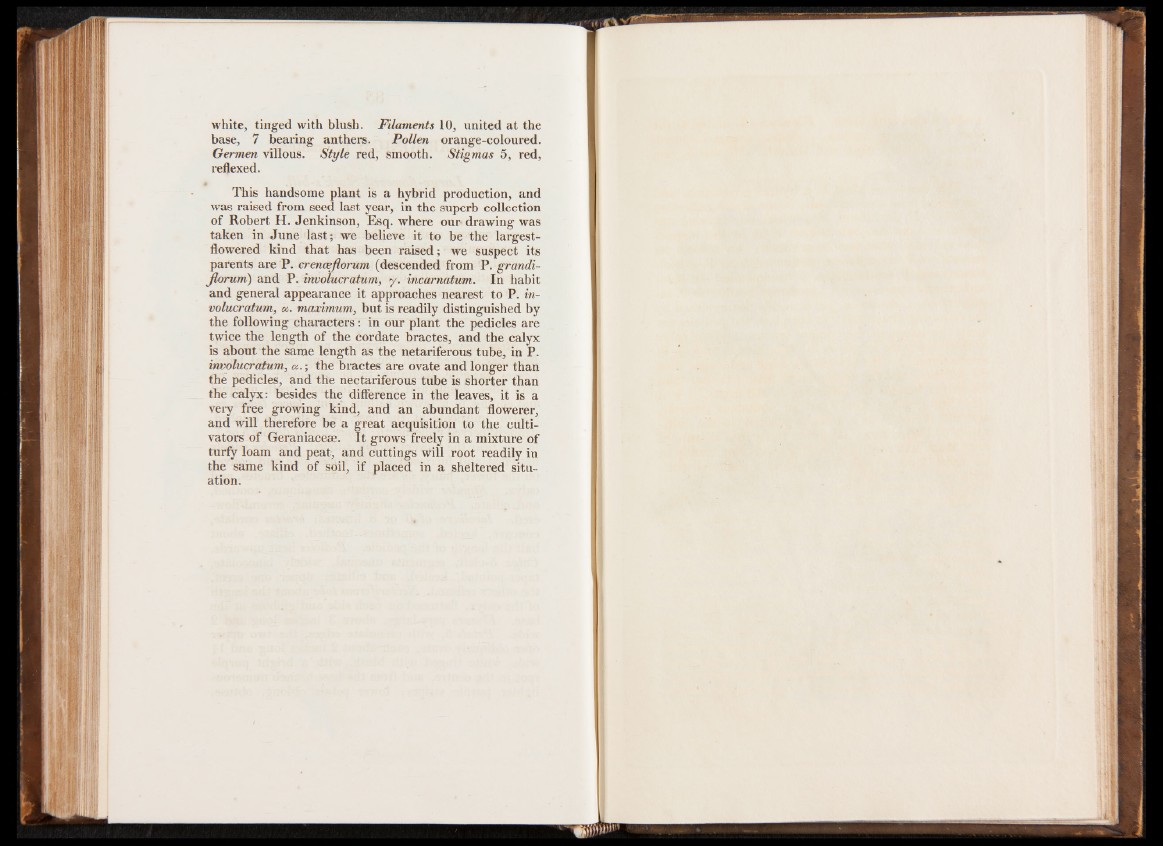
white, tinged with blush. Filaments base, 7 bearing anthers. Pollen 1o0r,a nugnei-tceodl oaut rtehde.
rGefelremxeedn. villous. Style red, smooth. Stigmas 5, red,
wasT rhaiiss ehda fnrdosmo mseee dp llaanstt yise aar, hiny btrhide spurpoedrubc ctioolnle, ctainond of Robert H. Jenkinson, Esq. where our drawing was
taken in June last; we believe it to be the largest-
pflaorwenertesd a rke inPd. crthenacte jhloarsu mb e(edne srcaeinsdeedd; frwoem sPus. pgercatn ditis-
Jlorum) and P. involucratum, y. incarnatum. In habit
vaonldu cgreantuemra,l aa,,p mpeaaxriamnucme , ibt uatp ipsr oreaacdhielsy ndeisatriensgtu itsoh ePd. ibny
the following characters : in our plant the pedicles are
twice the length of the cordate bractes, and the calyx
iins vaobluocurta tthuem ,s aam.;e tlheen gbtrha catse st haer en oetvaartief earonuds l otunbgee,r itnh aPn.
the pedicles, and the nectariferous tube is shorter than
tvheery c aflryexe : gbreoswidiensg thkein dd,i ffaenredn caen i na bthuen dleaanvte sf,l oiwt eirse ra,
vanatdo rws iollf tGheerreafnoiraec ebeee . a gItr egarto wacsq furieseiltyio inn tao mthixet ucruel toif
turfy loam and peat, and cuttings will root readily in
athtieo ns.ame kind of soil, if placed in a sheltered situ